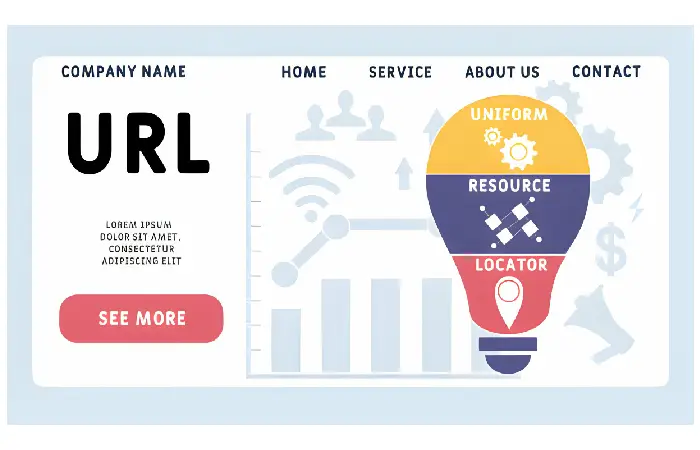Table of Contents
Definition
A Uniform Resource Locator (URL) is a fixed address for locating a unique resource on the net, including a report or an app. It is recognizable for users because the string of textual content is proven inside the browser to cope with the bar of each web page or links a user to any other internet place. A URL is a brand of Uniform Resource Identifier (URI). (uniform locator)
History
It all started with looking for a method to permit sharing information on computer systems. Three activities spotlight the roadmap toward the summary of URLs: (uniform locator)
- Trendy 1969, the Advanced Research Projects Agency Network(ARPANET) dispatched the primary node-to-node show from UCLA to the Stanford Research Institute, using the ARPANET 1822 Practice. Involving of the Physical, Data, and Network layers, a Transport layer turned into brought in 1970 with the Network Control Protocol (NCP).
- In 1983, ARPANET swapped from NCP to the Transmission Control Protocol/Internet Protocol (TCP/IP).
- In 1989, Tim Berners-Lee twisted the World Wide Web (WWW), announcing the profit language, aid identifiers, and protocols for retrieving resources.
When Berners-Lee brought the WWW to the world, information transmissions stabilized. By the early Nineties, the net had advanced sufficient to serve up files, mail, and facts, using protocols inclusive of Gopher, FTP, and Telnet.
The time became ripe, therefore, in 1992, for Berners-Lee to define the URL as a tool to link to the vicinity of any network resource a user may also require. Although his attention on URLs became for the internet and its HTTP protocol, his imaginative and prescient integrated maximum internet protocols.
Components of a URL
The four predominant components of URLs are the protocol, domain, direction, and query.
Let us have a closer observe the distinctive URL additives
Protocol
The protocol or system of a URL indicates the method to transmit or change records. The most acquainted scheme is the Hypertext Transfer Protocol (HTTP) or Hypertext Transfer Protocol Secure (HTTPS) to send HTML documents. FTP (for files) and Maillot (for mails) stay cases of different kinds of schemes.
HTTPS:// is the URL’s cozy protocol in the instance URL above.
Domain
The area or hostname of a URL is a consumer-friendly expression of the Internet Protocol (IP) cope with an internet site. It factors to the vicinity of the internet site’s host server.
In the example above, the area is www.Example.Com.
Path
The direction that follows the domain name inside a URL points to a particular record or different aid area. It can also encompass a query string.
In our example, URL, /category-A/subcategory-A1/version-123.Html suggests the URL’s path, which in this example, leads to a product web page.
Query
The question string, also referred to as a fragment identifier, is frequently used for inner searches and is commonly headed by a question mark (?).
For instance:
https://www.Instance.Com/class-A/subcategory-A1?SearchTerm=Model+123
This URL results from entering the search period “Model 123” on the subcategory A1 page. In this case, the touchdown web page is either the product page of model 123 or a list of search effects that incorporate the term “Model 123”.
Characters allowed in URLs

The characters allowed in URLs are special by using the World Wide Web Consortium. The specs include lists of unreserved and reserved characters.
- Unreserved Characters: These aren’t reserved and can be used freely in URIs and URLs. They include all top case and lower-case letters, decimal numbers, hyphens and underscores, tildes, and durations.
- Reserved Characters: These serve special functions inside a URI/URL. They consist of / ; : ? @ & , + $ =.
Reserved characters are used for delimiting or other unique functions internal a URL and can’t be used in some other way within a URL except they’re URL-encoded. So, for example, this approach will display a “?” as a question mark or a “+” as a plus sign interior a URL string, and these characters will require encoding.
Differences among URL and Domain
Although a website can be a URL, as inside the case of a homepage, complete URLs contain a good deal more impressive statistics than simply the domain call. URLs comprise aid addresses, report paths, and queries.
The domain name is a consumer-pleasant method of listing an IP deal, making it smooth to consider.
Components of a Site
An area divides into three unique hierarchical levels, which start at the proper facet of a URL’s area component.
- Top-Degree Area: domain name extension, along with .Com, .NET, .Biz, .De.
- Mid-Degree Area: the component with the maximum flexibility. It can be an enterprise’s name or a phrase. It refers to as the second one-degree domain.
- Prefix: the WWW prefix of the mid-stage area. However, it isn’t always required to begin with prominent net URLs from different URL schemes.
Absolute vs Relative URLs – uniform locator
However. If an internet site incorporates domestic or category pages, links to other net pages can use relative URLs if the resources are the same server as the referencing page. Relative URLs are less cumbersome than absolute URLs. However, the webmaster must be very careful to avoid broken hyperlinks if regularly moved sources. It may be better to err on the side of caution with the continuous use of absolute URLs.
ALSO READ : CONSORSHIP
ALSO READ : MOVIES

